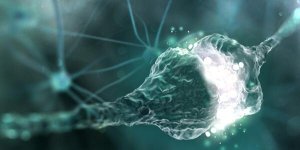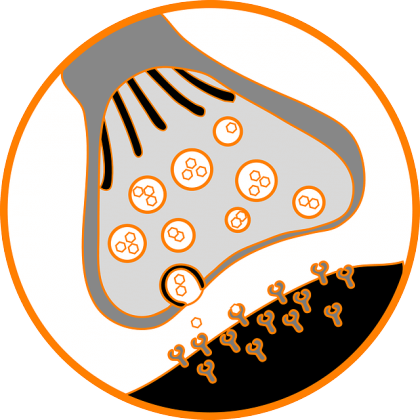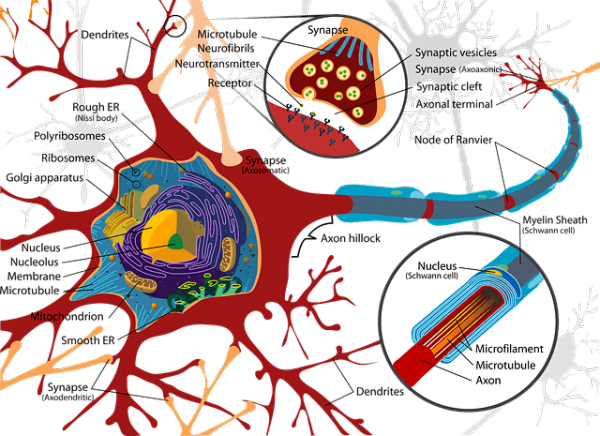What is the Synaptic Cleft?


Written and verified by the psychologist Gema Sánchez Cuevas
A synapse is where two neurons connect to transmit information from one to another. These synapses are not where the nerve directly touches another nerve, though. Rather, there is a space or synaptic gap (also called the synaptic cleft). This is where the information exchange happens. What happens in the synaptic cleft? How does it work? We will try to answer that question in this article.
During a chemical synapse, the neuron that passes on information (presynaptic) releases a substance. In this case, it’s a neurotransmitter, through the presynaptic axon terminal, releasing it into the synaptic gap. After that, the receiving neuron (postsynaptic), with specific receptors for each neurotransmitter, is responsible for receiving the information through its dendrites.
The electron microscope allowed us to discover that the communication between neurons did not mean that they touched, but rather that there was a space between them where they release neurotransmitters. Each of these neurotransmitters affect the functioning of the nervous system.
Chemical synapses
There are mainly two types of synapses: electrical and chemical. The cleft between presynaptic and postsynaptic neurons is substantially bigger in chemical synapses than in electrical ones, which is why it has the name synaptic cleft. The key feature of these gaps is that there are organelles bordered by membranes — called the synaptic vesicle — inside the presynaptic axon terminal.
Chemical synapses happen when chemical substances (neurotransmitters) are released into the synaptic cleft. These act on the postsynaptic membrane, producing depolarization or hyperpolarization. Compared to electrical synapses, chemical ones can change the signals it gives in response to events we experience.

The vesicles in the axon terminal store neurotransmitters. When a potential to act reaches the axon terminal and it depolarizes, the calcium channels open. This penetrates the cytoplasm and causes chemical reactions that make the vesicles expel their neurotransmitters.
The vesicles are full of neurotransmitters that act as messengers between the communicating neurons. One of the most important neurotransmitters in the nervous system is acetylcholine. It regulates the heart’s functioning and also acts on different postsynaptic targets in the central and peripheral nervous system.
Properties of neurotransmitters
Before, we believed that every neuron was capable of synthesizing or releasing only one specific neurotransmitter. But today, we know that every neuron can release two or more. For a substance to be considered a neurotransmitter, it must meet the following requirements:
- The substance must be present in the presynaptic neuron, in the axon terminals, contained in the vesicles.
- There are enough enzymes in the presynaptic cell to synthesize the substance.
- The neurotransmitter must be released when certain nerve impulses reach the axon terminals.
- It is necessary that receptors be present that have great affinity to it in the postsynaptic membrane.
- Applying the substance produces changes in postsynaptic potentials.
- Deactivation mechanisms must exist in the synapsis or around it.
- The neurotransmitter must fulfill the principle of synaptic mimicry. We must be able to reproduce the neurotransmitter’s action in an exogenous application of a substance.

Neurotransmitters affect their targets by interacting with the receptors. Ligands are substances that bind to receptors, and they can have 3 effects:
- Agonist: initiates the receptor’s normal effects.
- Antagonist: this is a ligand that binds to a receptor in order to not activate it. It prevents other ligands from activating it.
- Reverse agonist: binds to the receptor and initiates an effect that is the opposite of its normal function.
What kind of neurotransmitters are there?
In the brain, most synaptic communication happens using 2 transmitting substances. The first is Glutamate, which has excitatory effects, and second, GABA, which has inhibitory effects. The rest of the transmitters, in general, serve as modulators. That is, when they are released, they activate or inhibit circuits involved in specific brain functions.
Each neurotransmitter, when released into the synaptic cleft, has one, if not several, functions. It binds to a specific receptor, and it can even influence other neurotransmitters, inhibiting or potentiating other neurotransmitters’ effects. Scientists have detected more than 100 different types of neurotransmitters. The following are some of the ones that are best known:
- Acetylcholine: relates to learning and controlling the sleep stage in which we dream (REM).
- Serotonin: related to sleep, mood, emotions, food intake and pain.
- Dopamine: involved in movement, attention and learning emotions. It also regulates motor control.
- Epinephrine or adrenaline: becomes a hormone when the adrenal gland produces it.
- Norepinephrine or noradrenaline: its release produces an increase in attention and vigilance. In the brain, it influences emotional responses.
Synapses and medication
In addition to the neurotransmitters released into the synaptic gap, affecting the neuron receptor, there are exogenous chemical substances that can create the same or similar response.
By “exogenous substances”, we mean substances that come from outside our bodies, like medication. These can produce agonist or antagonist effects. They can also affect different aspects of the chemical synapse:
- Some substances have effects on the synthesis of transmitting substances. When the substance is in its first stage of synthesis, it’s possible to add a precursor to increase its rate of production. One of these is L-dopa, a dopamine agonist.
- Others act on storage and release of transmitters. For example, reserpine blocks storage of monoamines in the synaptic vesicles. In other words, it acts as a monoaminergic antagonist.
- They can also affect the receptors. Some substances can bind to the receptors to activate or block them.
- Some also can affect the re-uptake or degradation of the transmitting substance. Some exogenous substances can prolong the presence of the transmitting substance on the synaptic gap, such as cocaine. This delays the re-uptake of noradrenaline.
If you receive repeated treatments with a certain drug, this can reduce its effectiveness. This is called tolerance. Tolerance, when speaking of drugs, can lead to increased consumption, which then increases the risk of overdose. When speaking of medicine, it can produce a decline in the desired effects, which can lead to a person stopping their use of the medicine.
As you can see, in the synaptic gap, there are exchanges between pre- and postsynaptic cells through the release of neurotransmitters, which have various effects on our body. In addition, various drugs can modulate or alter this complex mechanism.
Bibliographic references
Carlson, N. (1996). Fisiología de la conducta. Barcelona: Ariel.
Haines, DE. (2003). Principios de Neurociencia. Madrid: Elsevier Science.
Kandel, E.R., Schwartz, J.h. y Jesell, T.M. (19996). Neurociencia y conducta. Madrid: Prentice Hall.
All cited sources were thoroughly reviewed by our team to ensure their quality, reliability, currency, and validity. The bibliography of this article was considered reliable and of academic or scientific accuracy.
Carlson, N. (1996). Fisiologia de la conducta. Barcelona: Ariel.
Haines, DE. (2003). Principos de Neurociencia. Madrid: Elsevier Science.
Kandel, E.R., Schwartz, J.h. y Jesell, T.M. (1996). Neurociencia y conducta. Madrid: Prentice Hall.
This text is provided for informational purposes only and does not replace consultation with a professional. If in doubt, consult your specialist.








